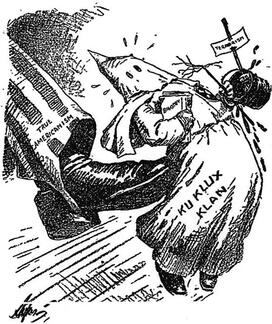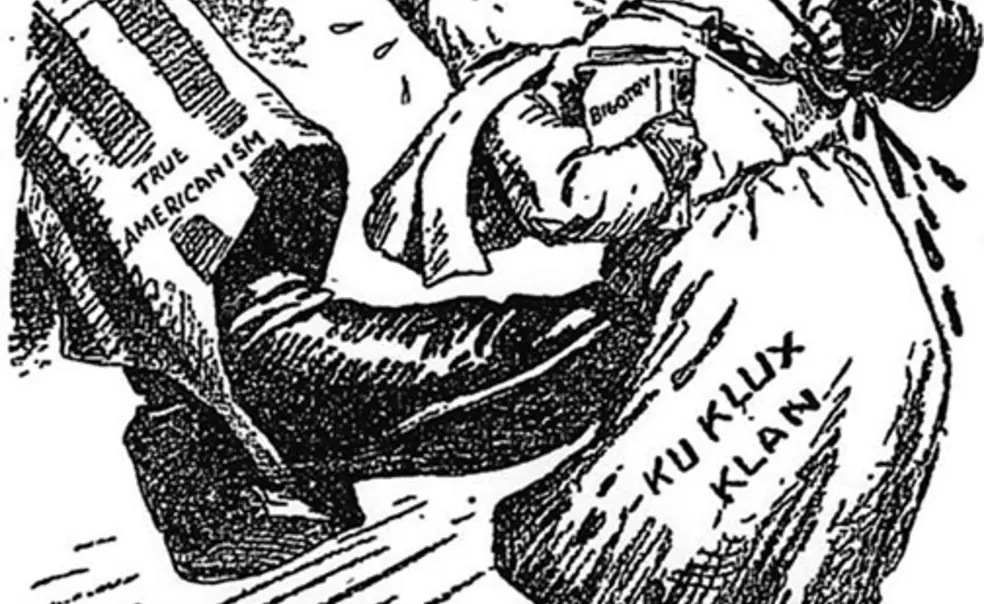
On Oct. 16, 1924, the Ku Klux Klan invaded Princeton in a parade of cars — only to be harried by 800 undergraduates who blocked the convoy’s progress up Nassau Street. Students tore off white hoods until the police intervened.
Created during the Reconstruction era to intimidate blacks in the South, the KKK was revived after receiving favorable press in the 1915 movie The Birth of a Nation. By the Roaring ’20s, the Klan was railing against immigration, then a major issue in the Garden State.
New Jersey’s ethnically diverse cities were hostile to the Klan, but Hightstown and other communities near Princeton were hotbeds, brimming with anti-Catholic sentiment. The largest KKK rally and cross-burning ever held in the Northeast took place on the outskirts of Trenton, with 10,000 in attendance. A month later came the automobile parade down Nassau Street.
Another Klan stronghold lay just 14 miles north of campus, in Zarephath: Alma White College, named for its founder, an ardent evangelist who called her religious movement Pillar of Fire.
White admired Princeton for its Presbyterian roots and even had her students erect dormitories resembling West College. She sent two sons to Old Nassau, and Arthur K. White *21 helped his mother promote a pro-Klan message through publications and pioneering radio broadcasts.
“For Princeton to try to remain indifferent to the Ku Klux Klan,” Alma White told a Daily Princetonian reporter in 1923, “is for Princeton to revolve, detached, in her own little eddy of oblivion while the rising tide of the greatest moral and political movement of the generation sweeps by.”
Princeton president John Grier Hibben 1882 disagreed, condemning the Klan as un-American for inflaming “race and religious prejudices.” Princeton students showed their views by attacking the Klan parade, and the hateful movement soon waned in the state.
“The Answer” by Charles Henry “Bill” Sykes. The cartoon appeared in the Philadelphia Public Ledger, now defunct, and the Los Angeles Times, in 1921.











No responses yet